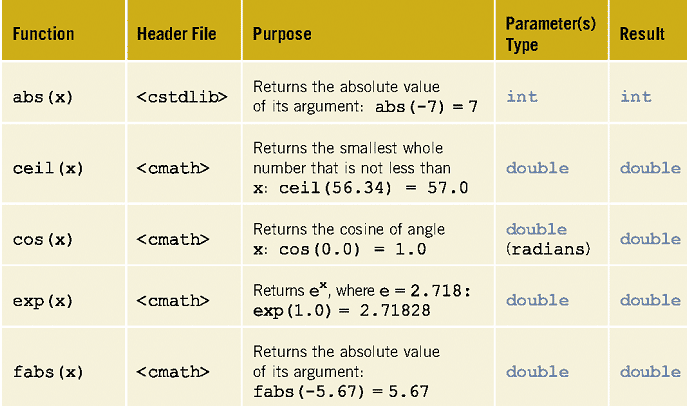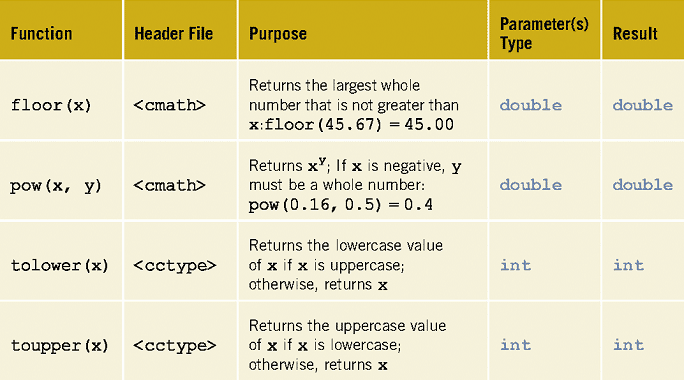In general, we use (call) functions (aka: modules, methods, procedures, subprocedures, or subprograms) to perform a specific (atomic) task. In algebra, a function is defined as a rule or correspondence between values, called the function's arguments, and the unique value of the function associated with the arguments. For example:
If f(x) = 2x + 5, then f(1) = 7, f(2) = 9, and f(3) = 11
You would say the call f(1) returns the value 7
1, 2, and 3 are arguments
7, 9, and 11 are the resulting values (or corresponding values)
Bjarne Stroustrup's C++ Glossary

